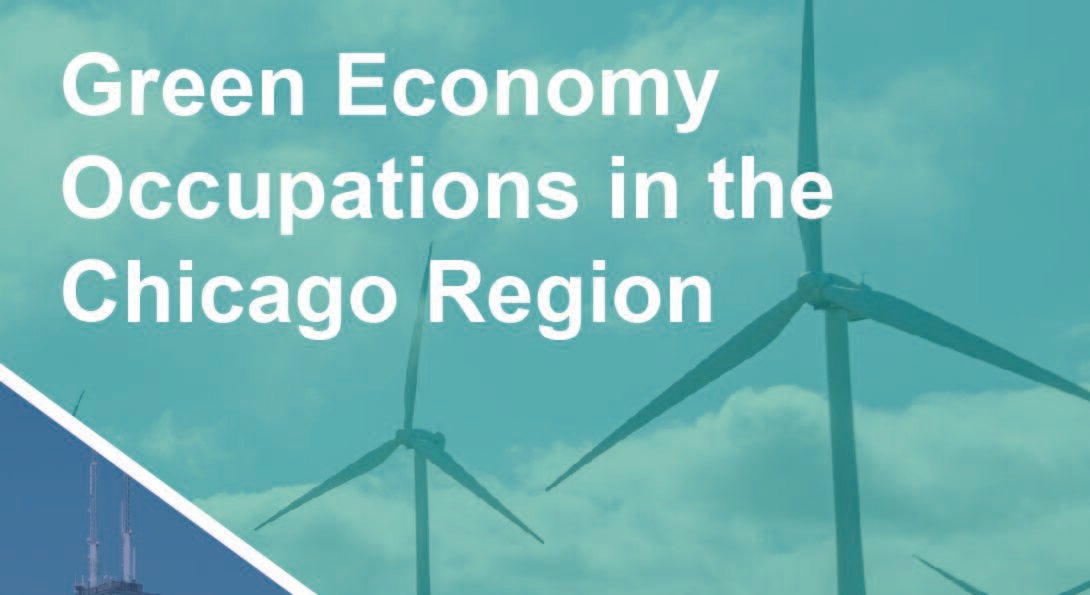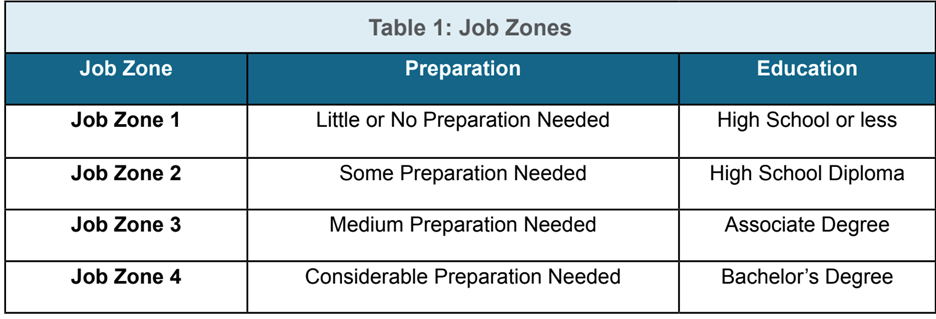Exploring Workforce Development in the Green Economy

The Voorhees Center’s newest report, Green Economy Occupations in the Chicago Region, is an overview of occupations in the Green Economy that synthesizes ONET occupational data to provide employment, Job Zone, technology, certification, and task-related information. Based on the Bureau of Labor Statistic’s Standard Occupation Classification system, the report looks at the 320 occupations (out of 867) that the Brookings Institute identified as making up the Green Economy.
In August, the Voorhees Center released an interactive one-pager tool that allows users to explore job information and regional economic data for each individual occupation. This report zooms out to look at these jobs collectively to identify trends across the entire green economic workforce.
All occupations can be broken down into 5 Job Zones that detail the level of preparation and education needed to qualify for any occupation. 61.2% of Green Economy occupations fall within Job Zone 2 or 4. In contrast, the majority of occupations in the Total Economy fall into Job Zone 2 or 3.
Part 2 Heading link

While the number of occupations in each Job Zone is not necessarily equivalent to the number of jobs within each Job Zone, the pattern remains the same with the majority of jobs falling within Job Zone 2 or 4 in the Green Economy (70.54% of jobs, 1,015,160 jobs). Furthermore, the large number of jobs in Zones 2 and 3 means that the majority of Green Economy jobs do not necessarily require 4-year bachelor’s degrees.
PArt 3 Heading link

We next look at median income per Job Zone to see the extent to which job preparation contributes to median income. While there is a clear correlation between preparation and median income, the median income within the Green Economy is higher in every Job Zone, emphasizing that with less preparation a person can have a higher median income in the Green Economy. The difference in income is particularly stark in Job Zone 2 in which Green Economy workers make about $10,000 more.